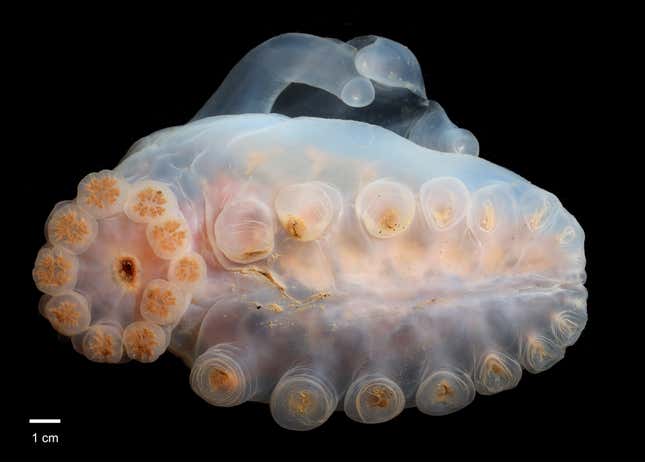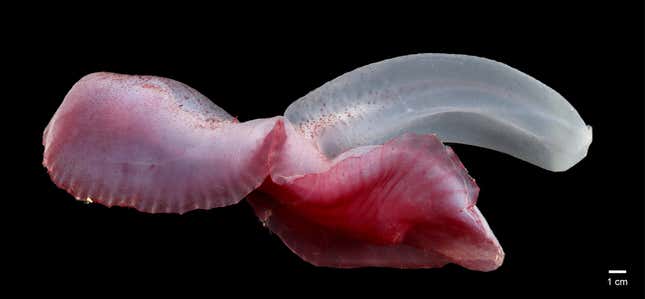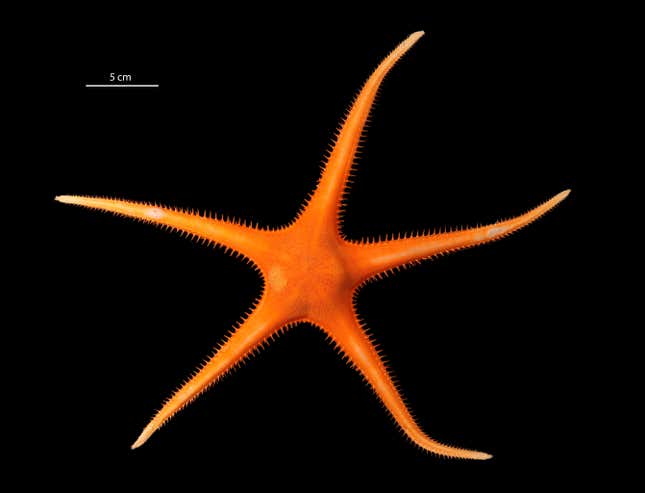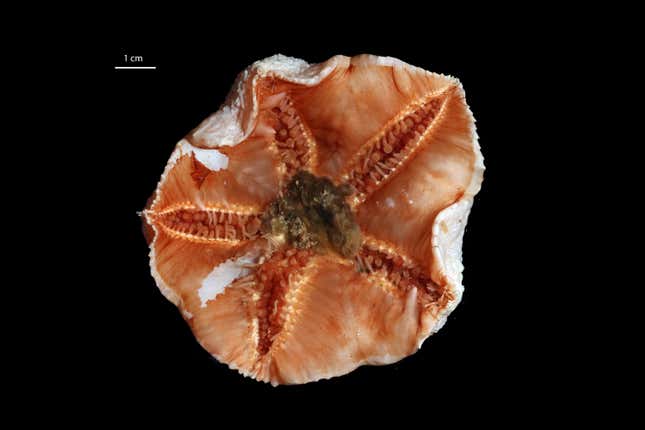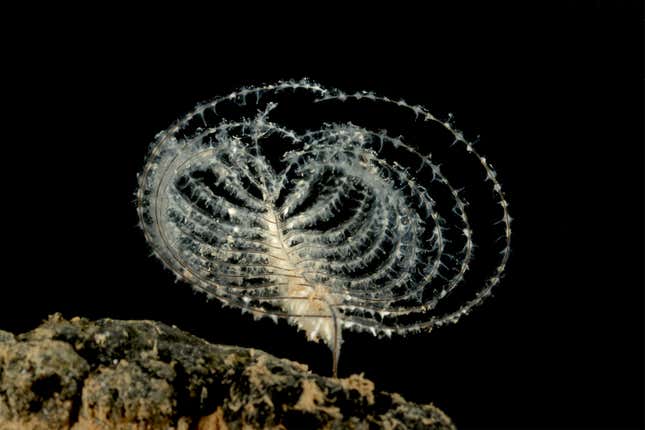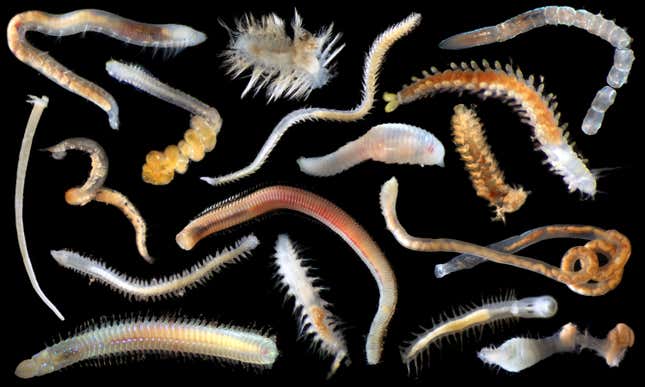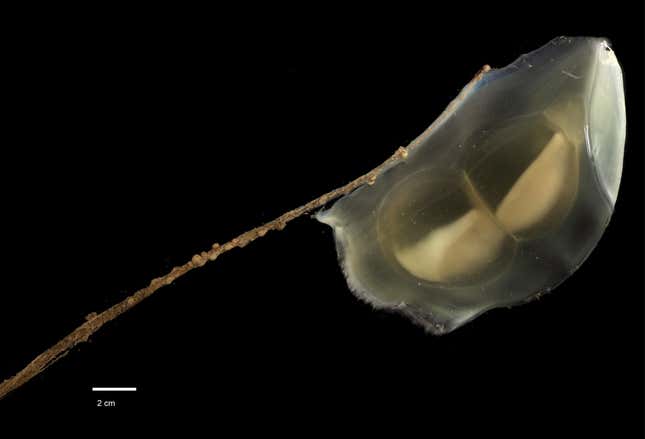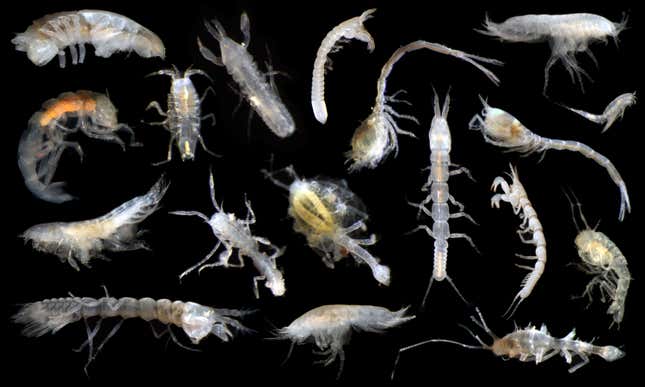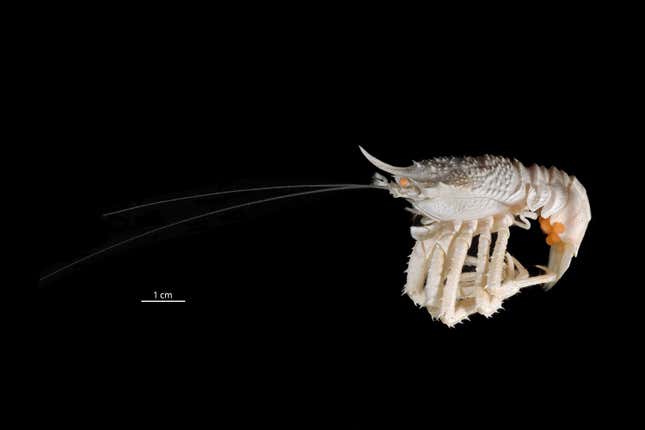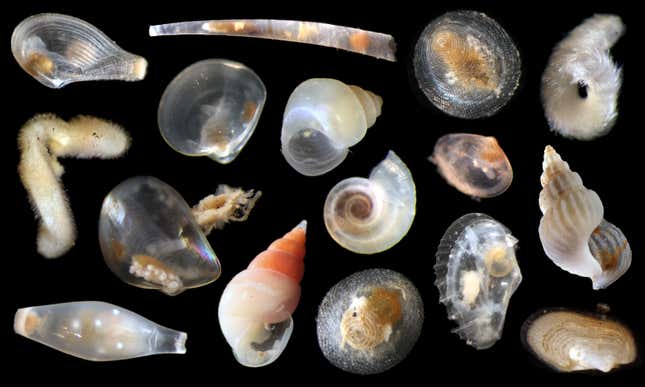
Deep beneath the sparkling surface of the Pacific Ocean, in the vast expanse between Mexico and Hawaii, lies an area known as the Clarion-Clipperton Zone (CCZ). At the floor of this marine region, between 12,000 and 18,000 feet below sea level, is a wide and mucky abyssal plain dotted by seamounts, that covers about 1.7 million square miles. There, it is very cold and exceedingly dark. No light reaches that deep. Temperatures hover below 40 degrees Fahrenheit. Food is scarce. Yet still, the sediments of the CCZ are far from barren.
Though sometimes referred to as a marine desert, “it’s surprisingly rich in marine life,” said Adrian Glover, a deep-sea researcher at the United Kingdom’s Natural History Museum in London, in a video call with Gizmodo. By his count, Glover has been on six or seven expeditions to visit and survey the CCZ. In every sample he’s seen collected, drawn onboard the boat by a long wire, or gathered by a rover, there is always life. “We sift through muddy samples on deck, we look at animals we’ve picked up with a remotely operated vehicle—a little robot submarine—or we do video and imagery work.” There’s never a dearth of unique creatures to see.
Now, new research illustrates simultaneously how biodiverse and poorly understood the CCZ is. We hardly know what’s there, but a renewed push for deep-sea mining could permanently harm the ecosystem before we even comprehend it.
You see, it’s not just mud and marine life in the CCZ. Also amid the sediments are underwater polymetallic nodules. These metallic, potato-sized lumps form naturally in that part of the deep ocean over millions of years as mineral deposits clump together. The special marine rocks are high in copper, nickel, cobalt, lithium, and rare earth metals—key and otherwise scarce resources in the construction of batteries and electronics. People have known about these nodules for decades, and there’s been lots of discussion about mining them in that time. But now the likelihood that such mining moves forward is higher than ever.
The UN-affiliated International Seabed Authority, the global body that oversees the international waters of the CCZ, has said it will begin accepting applications from mining companies in July. These corporations started exploring and staking their claims on the region years ago. The CCZ is already divided between different companies. Now, the ISA will begin reviewing specific plans for nodule extraction.
It’s not 100% certain that mining will move forward, nor what the timeline might be. But it’s even less certain what’s at stake if it does. About 90% of the species in the CCZ remain formally unknown to science, according to a study published Thursday in the journal Current Biology. That estimate generally agrees with other analyses, and it emphasizes just how opaque parts of our own planet remain.
Marine scientists and mining companies alike have conducted numerous biological surveys and collections in the CCZ—amassing data and samples from the region going back to The Challenger expedition in the 1870s. Yet, we’re still very far from cataloging all of what’s there. In the new research, scientists—Glover included—reviewed all the publicly available species records from the zone. Out of 5,580 recorded distinct organisms in the data, only 436 were already known and named species. The rest were mysterious, potentially never-before-discovered new organisms.
It’s a “low abundance, but a high biodiversity system,” said Muriel Rabone, a curator and deep-sea systematist at the London Natural History Museum. Rabone is the lead author of the new study. She spent about two years combing through data, along with help from Glover and her other co-authors. Together, the researchers found a wide variety of critters, including shrimp, sponges, crustaceans, worms, and fish in the record. But each species seems to be sparsely distributed, and nearly nothing is known about most of them. In many cases, just a single recorded individual might be the only evidence of a whole evolutionary lineage.
Rabone and her co-authors took on this research to begin building a biodiversity checklist for the CCZ, a first-of-its-kind effort for the region. The goal with such a list is to get a baseline on the ecosystem: To know what’s supposed to be living there and what each thing generally does. Ideally, this would allow for monitoring of mining and other human impacts, and be useful for assessing the health of the CCZ. But Rabone’s list is incomplete because the data is incomplete. “There’s significant geographic and taxonomic sampling gaps,” she told Gizmodo. “We’re really at the tip of the iceberg.”
“If mining goes ahead, we won’t know what we may be losing because we don’t know what there is to start with,” Rabone said. “These are incredible species. There’s these sponges that are literally made of glass,” she offered as one example, “absolutely beautiful animals.”
Many CCZ species live on or inside the polymetallic nodules. The lumps are tiny islands of solid habitat in the muck. With mining, those nodule-dependent creatures would disappear along with the valuable hunks of resources. Mining would also compact the ocean floor and create plumes of sediment in the water column. “There’s quite a lot of destruction,” explained Glover. “Like a plow across a field.”
It may be out of sight, out of mind, but the deep ocean is still intricately connected with all other life on Earth. Disrupting one of the last, largely untarnished wildernesses could have unforeseen consequences for everything else. A loss of deep-sea life might lead to cascading harm for fisheries closer to the surface or even for Earth’s oxygen balance, said Rabone. Or maybe the next generation antibiotic or anti-cancer agent is hiding inside a yet-to-be-cataloged CCZ invertebrate, offered Glover. He noted that marine organisms are four times more likely to have useful natural chemistry than terrestrial ones.
That’s not to say that mining couldn’t be done more sustainably. Though some damage would be inevitable, mitigation efforts and setting aside protected areas could help. Already, the ISA has established reserves and sections called areas of particular environmental interest (APEIs) meant to be kept safe from mining development. However, these were selected after and around existing corporate claims and might not encompass all of the region’s biodiversity.
To really know what to protect and how to do it, both Glover and Rabone agree that vastly more research and taxonomic work is needed. In an ideal world, there’d be many more extensive biological surveys—even of microbes, test mines to gauge real-world impact, and experiments on nodule recovery and habitat remediation before the mining industry is allowed in, Rabone said. And maybe, with more awareness, more funding, more conversations involving all stakeholders, and more time—these things could happen.
“In most other environments on our planet, the industry has started first, and then the environmental concerns come after,” said Glover. In the CCZ, we have the opportunity to do things differently. The biodiversity of the deep ocean might be 90% unknown, for now, but it doesn’t have to be doomed.
Click through to see some of the animals collected from the CCZ on a recent expedition.
